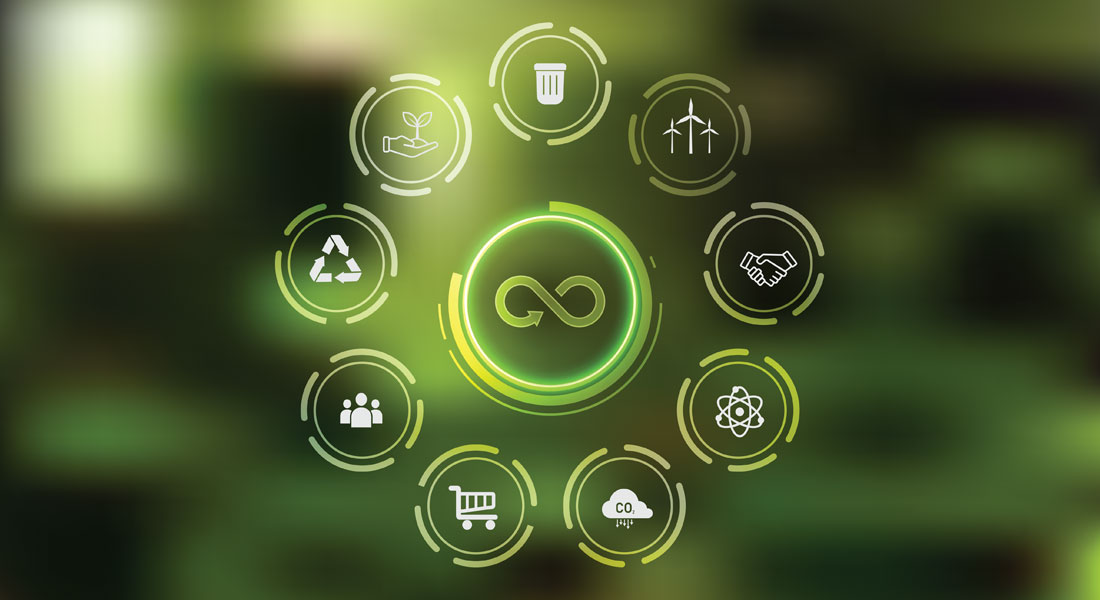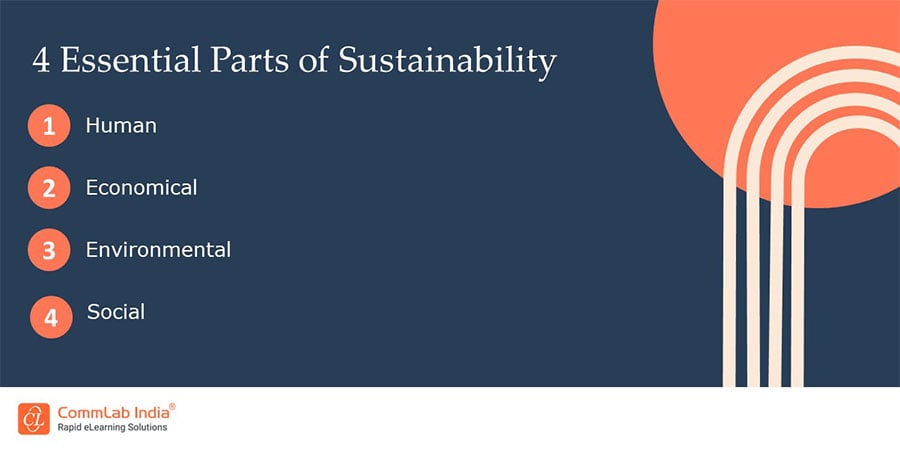How Can L&D Support Sustainability Commitments Through Corporate Training?

Sustainability is one of the most relevant concerns for individuals and businesses, with governments pushing for responsible consumption. With more pressure to be internally and externally sustainable, companies are looking at learning and development to provide potential solutions for their needs. Such a strategy is beneficial because corporate training can set habits and encourage people to take a more responsible approach. This blog will provide a few statistics and interesting insights about sustainability to explain its necessity for addressing how L&D can facilitate the shift.
L&D is Becoming a Strategic Unit for Most Businesses
Here’s how it supports sustainability commitments through corporate training:
- Prepares your leaders
- Promotes Green Policies in Your Workplace
- Encourages Sustainable Business Ideas and Operations
- Facilitates Green Mindset and Practices
Read on to know a few other ways L&D supports sustainability.
As per the United Nation’s SDG report,2018, 93% of the world’s 250 largest companies (in terms of revenue) worldwide report on sustainability. The higher focus on eco-friendly practices has helped reduce the per capita landfill rate from 3.2 in 1990 to 2.4 in 2018. The change is positive but needs to be continuous and incremental to succeed.
Sustainability Statistics
Most people still consider eco-friendliness the primary component of sustainability; however, that couldn’t be further from the truth. Sustainability has four essential parts, each of which is equally significant. They are:
- Human – developing skills and abilities critical for the organization’s well-being and improving the quality of human life in surrounding communities.
- Economical – creating a framework that distributes profit among the community members to ensure everyone benefits from the flourishing business.
- Environmental – ensuring maximum business operations follow an environmentally friendly approach and are not irresponsible in resource consumption.
- Social – working towards eliminating social barriers to uplift people from all races, backgrounds, ethnicities, religions, etc.

Following are some statistics to show our existing situation on these sustainability fronts:
- 25.9% of the global population was affected by moderate to severe food insecurity in 2019.
- The Northern Hemisphere had the warmest August in 2022.
- Remote learning is out of reach for at least 500 million students worldwide.
- COVID-19 resulted in an estimated 400 million job losses in the second quarter of 2020.
- 60-70% of the global ecosystems are declining more rapidly than they can recover.
- People recycle less than 20% of all e-waste, which grew by 38% during the pandemic.
These statistics show how critical it is for people and organizations to consume more responsibly and prioritize sustainability efforts.
→ Download eBook: How L&D And Business Can Align to Conquer The Future Of Work
How L&D Can Facilitate Sustainability Through Corporate Training
The good news is that organizations are increasingly moving towards sustainable choices to provide more balanced results to their stakeholders. Their L&D projects are especially critical to the shift in their policies, and you can also adjust yours to optimize your efforts.
Following are the top ways learning and development support sustainability in organizations.
1. Incorporates Sustainability Awareness in Training
Few people are unaware of what sustainability means, but several don’t know the depth of our current issues or the effort required to remain sustainable. A good way to change this reality is by incorporating information about sustainability in mandatory training to increase awareness.
This methodology will be necessary if you’re trying to make your organization more socially equitable, humane, and eco-friendly. The training can explain sustainability and show what it entails in practice to give them a complete picture. eLearning can be the best way to impart sustainability training as it is a paper-free digital training format.
Watch this video to gain insights on how eLearning can be used for sustainability training.
2. Prepares Your Leaders
Good habits don’t come from instructions but from leaders’ examples. Employees tend to incline toward learning by example, especially when it comes to routine practice. You can tell them a thousand times not to print items on paper for internal supervisor review, but they’ll forget when they get the opportunity to apply the teaching.
In contrast, a leader can rarely escape scrutiny from internal departments and external stakeholders. Their subordinates subconsciously follow their example, often replicating their attitudes and behaviors. Hence, if a leader consumes responsibly, so will the people (as much as possible).
3. Promotes Green Policies in Your Workplace
One of the best benefits of L&D facilitating this change is that its suggestions can make it to practice. Teaching people about the organization’s green policies will help them realize how committed the business is to sustainability and guide them toward greener actions at work. Use microlearning assets like infographics, digital flashcards and interactive PDFs instead of physical manuals and handouts to train them on such topics and lay emphasis on going green.
They need to remember these policies because your team members are the face of the organization. They need to present a credible impression to prevent any questions regarding the company’s HR choices.
4. Encourages Sustainable Business Ideas and Operations
Several people aren’t as active in sustainability because they are less aware of what they can do and the extent of the problem. The good thing about L&D sustainability training is that it opens up the platform for immense greatness.
It allows people to come up with new ideas about managing routine tasks. It can also help enhance and strengthen the item in case it becomes a requirement. Optimizing operations for sustainability is especially critical because it can significantly reduce costs.
5. Facilitates Green Mindset and Practices
Learning and development opportunities include teaching the subject’s complexities for some time. It encourages employees to unlock their mindset and potential and consider their options.

6. Sets the Base for Fully Sustainable Operations
Converting your entire organization would require an initial inspection to notice existing SOPs. These factors often change, and you’ll need to use sustainability modeling to set a standard for all future decisions. The point is for you and your team to make a habit of being professionally and personally sustainable.
7. Opens Employees to the Idea of Adopting Green Habits
Incorporating the truth about irresponsible and excessive resource consumption in the L&D process is the best way to encourage green habits. Employees must practice sustainability professionally, but this matter goes beyond an individual’s professional choices.
Try to promote adopting green habits in your personal and professional lives to boost the overall impact of your training. Training formats like Virtual Instructor-led training (VILT) can be impactful as it promotes collaborative learning in a virtual space and doesn’t involve the use of paper and also curbs logistics costs. Additionally, it is better for people to feel a commitment toward sustainability instead of doing it out of professional obligation.
Those committed to the cause will not feel forced into following green habits and will be happy, while others will become dissatisfied.
8. Establishes a Culture of Responsible Behavior
Lastly, teaching the significance of sustainable business practices through mandated training shows what your values are. Hence, it effectively adds sustainability to your organizational culture and mentions it when attracting talent, business partners, and clients.
Millennials and Gen Z constitute more than 50% of the workforce worldwide. People from these generations are more sensitive to issues like responsible consumption and have a favorable opinion of organizations that practice them.
Hence, establishing such a culture will increase the chances of your employees following company policies and also attract people with similar values.
Wrapping Up!
In a nutshell, sustainability is a critical concern for small, medium, and large organizations globally, and it will take active efforts to achieve. The L&D process is incredibly helpful in facilitating this change, allowing you to train employees to be responsible in their lives and opt for more sustainable choices personally and professionally. The role of L&D is gradually gaining prominence in the current business landscape. Download this eBook to explore how L&D and business can align to conquer the future of work.



![What are the Key Components of Sustainability Training? [Infographic]](https://blog.commlabindia.com/hubfs/blogs/sustainability-training-key-components-info.jpg)

![Key Steps to Developing an Impactful Sustainability Training [Video]](https://blog.commlabindia.com/hubfs/blogs/sustainability-training-impactful-steps-video.jpg)